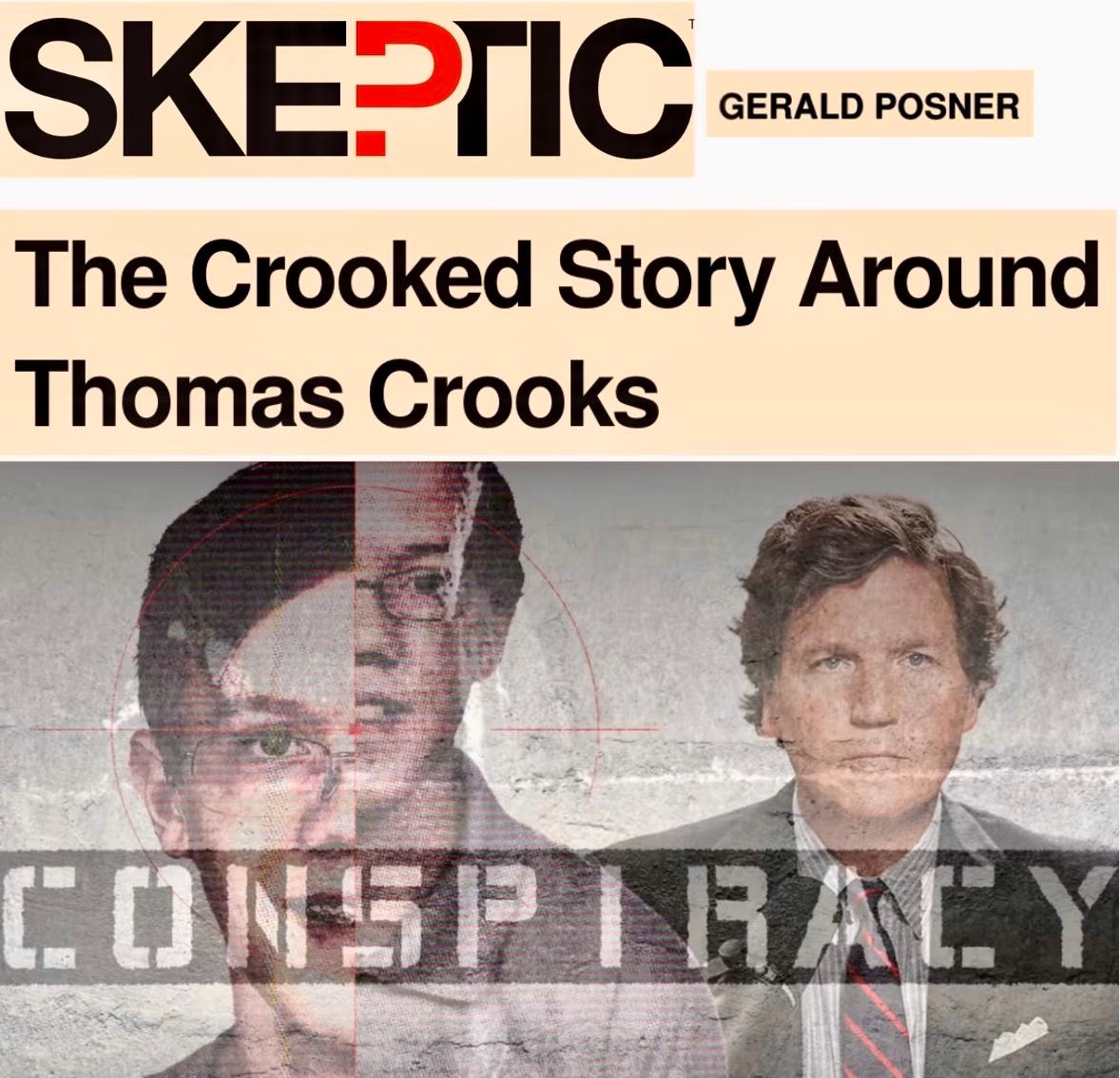The Crooked Story Around Thomas Crooks
My latest in Skeptic
The attempt on Donald Trump’s life in Butler, Pennsylvania, remains one of the most consequential security failures in recent political history. It deserves, and still lacks, a full public accounting. For months, legitimate questions have lingered about the background of the gunman, Thomas Matthew Crooks, and the lapses that allowed a 20-year-old with a rifle to reach an unsecured rooftop less than 200 yards from a former President and then current front-runner for the nation’s top job.
But the leap from unanswered questions to sweeping conspiratorial conclusions is a chasm worth avoiding. In recent days Tucker Carlson has encouraged precisely that leap. Rather than pressing for serious transparency, he has mixed factual gaps with political suspicion to construct a theory of concealed motives and hidden hands. The public deserves better than that, and so does the pursuit of truth.
Let’s start with what remains troubling. Federal investigators initially described Crooks as a quiet, socially isolated young man with a limited online presence. Yet Carlson, in a video posted on X on Friday, November 14, showcased material he claimed came from Crooks’ Google Drive and from social media accounts on YouTube, Snapchat, Quora, and Venmo. The content, he contended, suggested a trajectory of threats and firearms practice inconsistent with the FBI’s portrait.
The FBI has not publicly explained why these accounts were not part of its early description of Crooks’ digital activity. The haste to cremate the shooter and scrub his apartment, the rapid disappearance of his online postings, and the absence of a detailed biographical narrative have only fueled suspicion about the thoroughness of the FBI’s investigation. Americans can reasonably ask how a major assassination attempt generated to date so little public information about the perpetrator.
As I document in my 1993 book Case Closed, after he shot President John F. Kennedy, the FBI and the CIA quickly complied a detailed account of the life of Lee Harvey Oswald, in some cases what he was up to by the day, hour, and even minute in the months and even years leading up to the assassination. All of that was available to the public a year after the assassination when the Warren Report was published. And yet, over a year after Crooks’ attempted assassination of Donald Trump—and murder of Corey Comperatore, a volunteer firefighter and former fire chief who was in the audience—we know next to nothing about this shooter. How did he get on the roof of the adjacent building without anyone noticing? Why did no one in the Secret Service respond to the numerous verbal warnings by spectators at the rally (that can be heard on cell phone footage) that they saw a man with a rifle on the roof? And despite apparently not seeing Crooks on the roof, how did the Secret Service shoot and kill him within seconds of his opening fire on Trump?
Those questions merit full answers. A democratic society should not have to rely on private individuals to surface essential details about an attack on a national political figure. If intelligence agencies do their job the country should not need to rely on podcasters for accurate and relevant information about important national events.
But Carlson’s speculation overshoots the available facts.




Understatement of the year: "But Carlson’s speculation overshoots the available facts."
Also would apply to almost anything Tucker Carlson "reported" about any controversial topic.